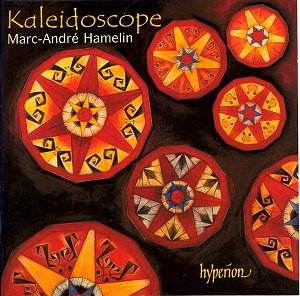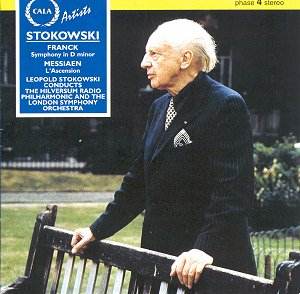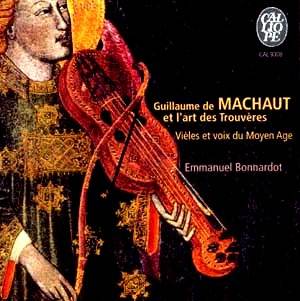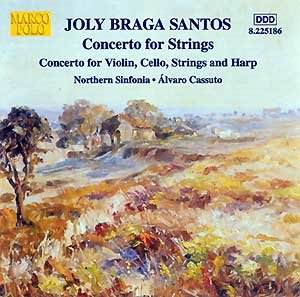 Composer: Kaleidoscope
Composer: Kaleidoscope
Works: Fritz Behr: Polka de W. R. (arr. Rachmaninov); Edna Bentz Wood: Valse Phantastique; Emile-Robert Blanchet: Au jardin du vieux sérail, Op. 18 No. 3; Felix Blumenfeld: Etude pour la main gauche seul, Op. 36; Alfredo Casella: Deux Contrastes; Alexander Glazunov: The Seasons, Petit Adagio (arr. Hamelin); Leopold Godowsky: Triakontameron, No. 13, Alt Wien; Marc-André Hamelin: Etudes, No. 3 (d’après Paganini), No. 6, Essercizio per pianoforte (Omaggio a Domenico Scarlatti); Josef Hofmann: Mignonettes, Nocturne (‘Complaint’); Charakterskizzen, Op. 40, No. 4, Kaleidoskop; Nikolai Kapustin: Toccatina, Op. 36; Jules Massenet: Valse folle; Arthur Lourié: Gigue; Alexander Michalowski: Etude d’après l’Impromptu en la bémol majeur de Fr. Chopin, Op. 29; Moritz Moszkowski: Etude in A flat minor, Op. 72 No. 13; Jacques Offenbach/Jakob Gimpel: Concert paraphrase of ‘The Song of the Soldiers of the Sea’; Francis Poulenc: Intermezzo in A flat; John Vallier: Toccatina
Performers: Marc-André Hamelin (piano)
Recording: Recorded in Henry Wood Hall, London on February 2nd-4th, 2001. [DDD]
Label: HYPERION CDA67275
The album titled “Kaleidoscope” showcases the remarkable versatility of Marc-André Hamelin, a pianist whose technical prowess and interpretive depth allow him to navigate an eclectic mix of works, many of which reside in the shadows of the classical canon. The choice of repertoire reflects both a celebratory and exploratory spirit, inviting listeners to engage with pieces that range from the well-known to the obscure. Each work has been selected not only for its musical merit but also for its potential to reveal the subtleties of Hamelin’s artistry.
Hamelin’s execution of Edna Bentz Wood’s Valse Phantastique sets a nostalgic tone for the collection, a piece that feels both intimate and expansive under his fingers. His nuanced touch brings forth the delicate interplay of melody and harmony, a quality that persists throughout the recording. The intricate phrasing and the deft use of rubato in Wood’s piece exemplify Hamelin’s ability to infuse life into lesser-known compositions. The inclusion of Alfredo Casella’s Deux Contrastes showcases a fascinating juxtaposition of styles, with the first movement echoing Chopin’s lyrical qualities before veering into a Stravinskian spikiness in the second. Here, Hamelin’s technical command is on full display, particularly in the abrupt contrasts that characterise the second piece, which could easily overwhelm a less adept performer.
The recording quality is pristine, allowing each note to resonate clearly in the acoustically rich environment of Henry Wood Hall. The balance between the piano and the ambient sound is expertly managed, ensuring that Hamelin’s subtle dynamics and articulations are captured in full detail. This technical proficiency is complemented by the engineering choices that present the piano with a warm, yet vibrant character, making it an inviting listen for both casual and discerning audiences.
Among the highlights of the album is Hamelin’s own Etude No. 3, which is an homage to the virtuosic traditions of Paganini and Liszt. This piece not only serves as a display of technical fireworks but also as a testament to Hamelin’s compositional voice, blending humor and brilliance seamlessly. Meanwhile, Poulenc’s Intermezzo in A flat receives a performance that marries elegance with a touch of melancholy, showcasing a depth of emotion that is often missing from more straightforward interpretations. The lively Toccatina by Kapustin adds a jazzy flair, demonstrating Hamelin’s adaptability to a variety of styles while maintaining his unique interpretative fingerprint.
The recording includes a delightful surprise in Massenet’s Valse folle, a piece that diverges sharply from the composer’s more famous lyrical works, featuring a raucous energy that Hamelin embraces with gusto. This moment encapsulates the essence of the album—a kaleidoscopic journey through the piano repertoire that oscillates between the delicate and the exuberant.
Hamelin’s “Kaleidoscope” not only serves as a compelling showcase of his extraordinary talents but also as a thoughtful curation of works that deserve greater recognition. Each piece, meticulously chosen and executed with consummate skill, invites listeners to explore the breadth of the piano’s expressive capabilities. This recording stands as a significant contribution to the discography of contemporary piano music, illuminating lesser-known gems while reaffirming Hamelin’s position as one of the leading interpreters of our time.



